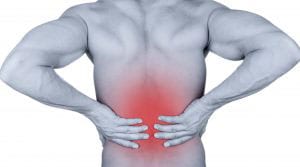Over time, you may have noticed that you have neck pain, and that you’re stiffer in the morning than you are by the afternoon.

The most common symptom of ankylosing spondylitis (A.S.) is low back pain that develops so gradually you may not notice it in the early stages. You might notice that your posture has become stooped and you are tired all the time. If you have these symptoms, and the pain in your lower back has persisted for more than three months, you should talk to your doctor about them, and ask to be tested for A.S. Other joints that can be impacted by this rare disease are the heels, hips, knees, ribs, shoulders, and the small joints in the hands and feet. But, primarily, A.S. impacts the spine, and like other forms of inflammatory arthritis, it can flare-up, get better, and then flare-up again.
There is no definitive test for A.S. so it is diagnosed based on the medical professional’s judgement after reviewing the patient’s medical history, a physical exam, x-rays or other imaging studies, and possibly blood tests.
Another thing to consider is that AS can cause inflammation in the eye, which is known as uveitis. According to the National Eye Institute, “Uveitis is a general term describing a group of inflammatory diseases that produces swelling and destroys eye tissues. These diseases can slightly reduce vision or lead to severe vision.” Symptoms can include sensitivity to light, redness and pain in the eye, and blurred vision. If you are experiencing any of these symptoms, seek medical attention immediately.
Getting as early a diagnosis as possible is important, because without treatment, A.S. can result in the loss of all mobility in the neck and lower back, as well as eye problems.






